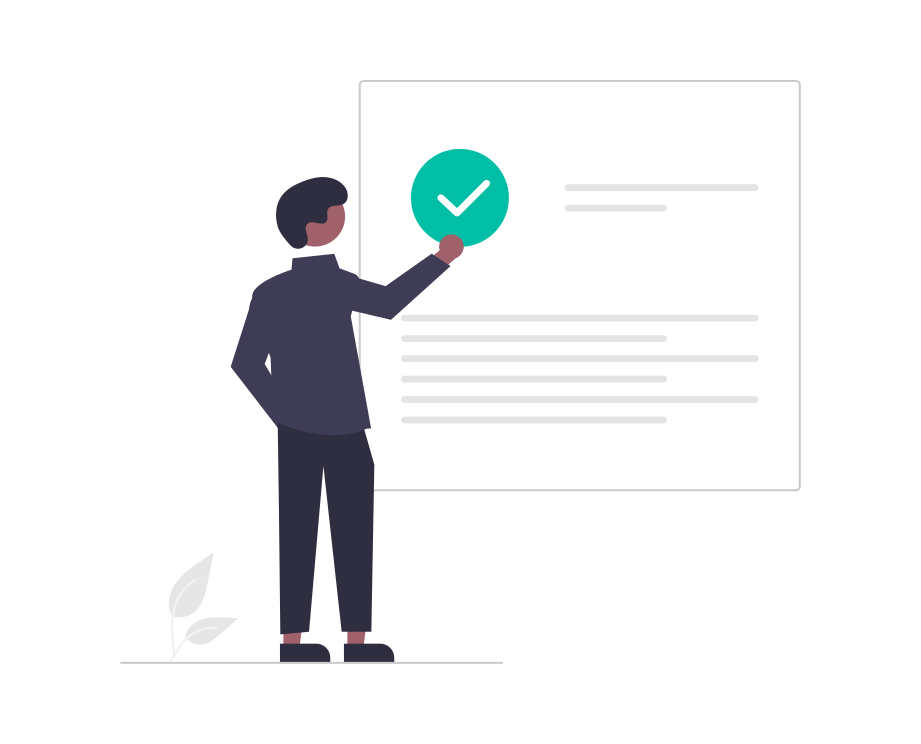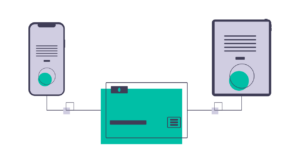101 Lessons from scaling 101 startups

Embarking on the journey of scaling a startup can be a challenging yet immensely rewarding endeavour. Over the last (almost) four years, Growth Division has had the privilege of working with over 100 leading technology startups. To honour this achievement, we’ve compiled 101 actionable tips across various critical facets of business growth.
From crafting an effective growth strategy and mastering content marketing to navigating the ever-changing landscape of SEO, direct outreach, team dynamics, and community building, this treasure trove of insights is designed to empower entrepreneurs and marketers alike. Each tip shared here reflects practical insights gleaned from real-world growth experiences. Get ready for a no-nonsense exploration of what it takes to thrive in the startup landscape.
Growth strategy

- Always start with a deep dive on the customer, leverage research and feedback, and don’t just take the founder’s word for it. (Tom Dewhurst)
- Use the North Star Metric to align your team to a key growth goal and use automations to keep everyone up to date on progress vs target. (Tristan Gillen)
- Bullseye framework all the way. (Tom Dewhurst)
- Always think about your marketing activities in relation to the customer journey and marketing funnel. (Tristan Gillen)
- Try to balance short-term channels that have an immediate impact and long-term channels that build your brand. (Tristan Gillen)
- Don’t be too ambitious when setting targets, make them reasonable and achievable. (Tristan Gillen)
- Set up monthly/quarterly OKRs and review them regularly. Are you on track? What can you and your team do to reach them? (Fiona Moucq)
- It’s rare channels work well in isolation. Use a channel mix where you’ve considered how the channels interact and work with each other. (Tristan Gillen)
- To test the work you’ll put into practice to solve your target’s pains and needs (your “job to be done”), check if your target has high urgency, agency, and low ability to solve their problems. There is your hot spot if they can’t solve their problem independently and are motivated to solve it quickly. (Pablo Barros)
Try to balance short-term channels that have an immediate impact and long-term channels that build your brand.
Tristan Gillen
Content Marketing

- Content can be a business differentiator when you find your unique voice and point of view. Share your startup’s journey, customer success stories, or behind-the-scenes insights. The world doesn’t need more SaaS products, it needs more humans solving real-life problems. (Kerry Leech)
- When building content, always keep your audience’s day-to-day problems and interests in mind. (Tristan Gillen)
- SEO changes all the time. So rather than chasing SEO hacks, create content that feels like a natural conversation between two humans, and then optimise where relevant and appropriate. This is the way algorithms are headed. (Kerry Leech)
- As a Founder, content marketing and SEO can be hard – invest in good writers and knowledgeable experts. The best businesses have strong inbound traffic and organic leads. (Tom Dewhurst)
- Given that 95% of your target audience is not ready to buy at any given time, you need a consistent content strategy that builds trust with your ideal customers over time. (Kerry Leech).
- Identify 2-3 key areas and terms you want your business to be known for and go after this relentlessly. Build a content world around these terms. Focus is your friend! (Lucy Dewhurst, TestGorilla)
- Start-ups usually need to make budgets work harder. Diversify your formats. Don’t just stick to blog posts. Take a 1500-word blog post and repurpose it into an eBook, 5 LinkedIn posts, a LinkedIn carousel, a webinar presentation, and more. (Kerry Leech)
- LinkedIn newsletters are a great way to distribute all the great content you’ve already created. This can have a direct impact on leads and booked demos. (Kerry Leech)
Identify 2-3 key areas and terms you want your business to be known for and go after this relentlessly. Build a content world around these terms. Focus is your friend!
Lucy Dewhurst
Search Engine Optimisation (SEO)

- SEO takes time! Start putting the building blocks in place as early as you can afford to. (Tristan Gillen)
- Consider what your potential customers are searching for, and what users are looking to achieve from that search query. Keyword A might seem like the best opportunity based on search volume, but if none of your competitors are ranking for this phrase, or the page you’re trying to rank isn’t similar to what IS ranking, you may need to consider another relevant keyword. (Max Ward, Logic Design)
- If you’re a start-up trying to better understand your audience, implement Google Search Console early on in your journey and regularly review it to understand what long tail keywords your site is receiving impressions for. (Lorenzo Luiso)
- Create content assets that people have to link to to build your backlink profile quickly. Manual outreach is hard. It’s much easier to create a list, statistics page, or other linkable assets that generate organic backlinks without the hard graft. (Lucy Dewhurst, TestGorilla)
- Investing in SEO early on will pay dividends, even if it’s simply doing some deep keyword research to understand how your target audience refers to your product or service. (Lorenzo Luiso)
- Use start-up status to gain as much PR coverage as possible to drive organic traffic. Launching a seed round, or been accepted into an accelerator program? Reach out to journalists and let them know, even if it’s just for press local to where you grew up. Building this level of credibility and links early on will help your site rank in the future. (Lorenzo Luiso)
SEO takes time! Start putting the building blocks in place as early as you can afford to.
Tristan Gillen
Direct outreach

- Don’t rush the launch or phase one of your strategy development. Optimise the profiles you want to use and take time to decide who you want to target, allowing the accounts the warm up properly. (Nic van Ryneveld)
- Always follow-up with your interested leads in a timely manner, and keep track of your previous follow-up. Be persistent without being pushy. Check-in after the initial call, and if it’s a “not now”, keep in touch – they can eventually turn into a YES! (Jae Hendricks-Small)
- Don’t test too many things at once. It’s hard to gauge which data is having what influence if there are too many variables involved. (Nic van Ryneveld)
- When writing outreach copy, sales doesn’t always have to be the sole intention. Shift the focus to building meaningful relationships, rather than just acquiring leads. Genuine connections are more likely to result in long-term customer loyalty, partnerships, and referrals. (Jae Hendricks-Small)
- Don’t try to start too big, 2 campaigns are ideal from 1 profile. 3 campaigns can be done but you’ll slow down your progress and big changes could be required after a few months. (Nic van Ryneveld)
- A/B test your copy; check which subject lines work, what message has a better open rate & response rate etc. (Jae Hendricks-Small)
- When you have found a campaign that works best, try and double down on it, but bear in mind that every good lead source can run out of fresh prospects, so don’t put all your eggs into one basket. (Nic van Ryneveld)
- Encourage leads to provide feedback on your products, services, and the content you share. This not only shows that you value their opinions, but also provides you with insights for improvement. (Jae Hendricks-Small)
- Don’t chase results in the early months, chase performance against best practice and then the results will be an effect of consistent outreach. (Nic van Ryneveld)
- Even “No’s” can provide valuable insight. Track why leads are saying no to keep improving your outreach. (Jae Hendricks-Small)
- Create an effective ICP document and track all responses/engagements so that you can see how these match or misalign. (Nic van Ryneveld)
- Don’t approach outreach like you need to get to as many people as possible, have patience and tailor your approach so that you can refine your process without burning through leads. (Nic van Ryneveld)
- Explore different lead sources. (Jae Hendricks-Small)
- Spend the first three months testing various strategies, campaigns, and copy – it will allow for better quality further down the line. (Nic van Ryneveld)
Even “No’s” can provide valuable insight. Track why leads are saying no to keep improving your outreach.
Jaw Hendricks-Small
Team dynamics

- Bring in the experts and let them crack on with what they’re good at. (Tom Dewhurst)
- Don’t hire a generalist marketer in the early stages of growth. As you don’t yet know which channels to market enable growth, you won’t know which skills to hire for. Often generalists can waste time and money trying their hand at things outside of their skill set. (Tristan Gillen)
- Always take the time to give kudos to your team. If they’ve worked hard recently, have gone above and beyond or impressed you in any way, show your appreciation for a happier team. (Fiona Moucq)
- Celebrate successes with the team, even the small wins. If your team is happy, motivated, and celebrating hitting growth goals you’ll have a well-incentivised team that smashes your growth ambitions. (Tristan Gillen)
- Even with a remote team, it is important to arrange some face-to-face time. Try to make an effort around key events (such as a Christmas party or offsite). Even if it’s annually, doing it WELL is enough. (Tom Dewhurst)
Celebrate successes with the team, even the small wins. If your team is happy, motivated, and celebrating hitting growth goals you’ll have a well-incentivised team that smashes your growth ambitions.
Tristan Gillen
Community Building (LinkedIn)

- Optimise your LinkedIn profile. Ensure your headline includes your value proposition so that your target audience can identify this as the solution to their pain points. (Fiona Moucq)
- Add personality to your posts, it’s a busy space so you need to draw people in. For personal posts, the more you sound like yourself the more it will resonate with your followers. Don’t feel the pressure to be a different person on LI. If you love emoijs, use them. If you love puns, use them. For business accounts, don’t be afraid to be playful. You may be a software company but you can still use a GIF. (Lauren Poole)
- Try different content types to see which work best for you, experiment with polls, carousels, video or graphics. (Lauren Poole)
- The key is regularity and consistency, prepare your posts in advance, so no urgent interruptions get in the way of posting. (Fiona Moucq)
- People and story-led posts perform the best on LinkedIn so always tag people in your posts. You can try team news, quotes, case studies, all these are a great way to drive engagement and get more eyes on your content. (Lauren Poole)
- Spend time analysing your best and worst-performing posts. Then focus on reproducing more of the top posts. (Fiona Moucq)
- Repurpose content, remember just because you’ve seen it doesn’t mean all your followers have. Get as much leverage as possible out of content types like blogs, webinars, studies etc. (Lauren Poole)
- Set up Google Alerts on specific keywords relating to your business. Each time you create content, check your inbox and find interesting articles with valuable stats that will help you develop top-of-the-funnel posts. (Fiona Moucq)
- Engage with all activity on your posts, it’s a two-way street so make sure you respond to all comments. It’ll help generate a bit of buzz. (Lauren Poole)
- Spend time perfecting your hooks; just as you’d meticulously craft impactful subject lines for your sales emails or newsletters. And make sure the rest of the copy delivers the promise. (Fiona Moucq)
- Turn the creator mode ON. Make it easier for members to discover your content by setting up 5 topics you post about; they will appear as hashtags under your headline. Your connect button will become a ‘Follow’ button. (Fiona Moucq)
- Don’t produce content in isolation. Repurpose a great topic on your company page from your CEO, Sales Director’s and/or team’s profile. (Fiona Moucq)
- Use tools to schedule your content. Taplio allows you to schedule your posts and include media such as PDF, and Carousels (these features aren’t available in other tools like Hootsuite). Use their AI creation feature to help you with hooks and body copy. And finally, engage with your audience community and like/comment on their posts. (Fiona Moucq)
- Use the 250 credits to invite your connections to follow your company page at the beginning of the month. For each person that accepts it, you get a credit back. Check the credits every few days and keep inviting people. Your follower growth will take off! (Fiona Moucq)
- ChatGPT is great for content idea generation. Select a topic and ask AI to suggest some sub-themes. Don’t just copy-paste the first suggestion given. Ask for controversial opinions/analogies/ benefits etc. (Fiona Moucq)
People and story-led posts perform the best on LinkedIn so always tag people in your posts. You can try team news, quotes, case studies, all these are a great way to drive engagement and get more eyes on your content.
Lauren Poole
General
- Last and first-touch attribution oversimplifies the picture of how effective each channel is. Most of the time revenue is driven by multiple channels, working in conjunction with one another. It is useful to give you an idea on what is working, but don’t get tied down by this form of attribution. (Tristan Gillen)
Experimentation

- Frame all ideas and campaigns as experiments, learn from the data, systematise successful experiments for compounding growth over time. (Tom Dewhurst)
- Use the ICE (Impact, Confidence and Ease) score to help you to prioritise which of your growth ideas you should run next. (Tristan Gillen)
- For each experiment, try to keep just one variable metric, focusing on what the experiment tries to map as a main goal. Too many variables can confuse and hinder clarity to the hypothesis you´re trying to test. (Pablo Barros)
- Improve accountability and creativity by encouraging your team to come prepared to growth meetings with their own ideas. (Tom Dewhurst)
- Run as many channel tests as possible, but when you find the few channels that work well for your acquisition, keep them and scale them. (Pablo Barros)
Frame all ideas and campaigns as experiments, learn from the data, systematise successful experiments for compounding growth over time.
Tom Dewhurst
Sales

- Spend time to build solid CRM processes that are easy to integrate into your day to day use of the CRM. This makes tracking, reporting and understanding how to improve so much easier in the long run. (Tristan Gillen)
- Trust your gut. If you don’t feel the prospect is right for your business, turn down the money and move on. (Tom Dewhurst)
- Don’t hire salespeople too early. It’s important for Founders to understand who they are selling to and how they are selling their product or service. (Tristan Gillen)
Trust your gut. If you don’t feel the prospect is right for your business, turn down the money and move on.
Tom Dewhurst
Email Marketing

- Make growing your list a priority and use other channels to drive email sign ups – through regular posts on socials, competitions and partnerships with other brands. This is the only channel that’s algorithm proof and will ensure sustainable growth without additional budget spent! (Magda Kolesinski & Olga de Villiers – co-Founders of It’s Personal)
- Don’t send sales-only emails to your audience. (Clara Toombs)
- Be careful with AI generated content. While using generative AI to streamline your marketing processes is great, customers are super savvy and want to hear from a human being so make sure your content always sounds like it comes from one! (Magda Kolesinski & Olga de Villiers – co-Founders of It’s Personal)
- Make your sign-up form prominent and compelling (Clara Toombs)
- Allow unsubscribes – churn is a fact of life so make it super easy to unsubscribe and leave a good impression so they are likely to recommend you further. (Magda Kolesinski & Olga de Villiers – co-Founders of It’s Personal)
- A/B test content to ensure you understand what is resonating with your audience (Clara Toombs) Make sure your email communication is in line with your broader marketing activities and looks and feels like the same brand they see and hear from on other channels. (Magda Kolesinski & Olga de Villiers – co-Founders of It’s Personal)
- Make sure your email communication is in line with your broader marketing activities and looks and feels like the same brand they see and hear from on other channels. (Magda Kolesinski & Olga de Villiers – co-Founders of It’s Personal)
- Implement content pillars so that you are not bombarding your audience with promotional-only type emails. A rotation of content pillars e.g. educational, community building and promotional can keep your audience engaged and drive revenue (Clara Toombs)
- Establish an ongoing process to optimise your automations on a regular basis – this is your money making machine and there is always a way to push it 2% further! (Magda Kolesinski & Olga de Villiers – co-Founders of It’s Personal)
- Strive for deep segmentation – never send the same email to more than 20% of your database. Personalise, personalise, personalise. (Magda Kolesinski & Olga de Villiers – co-Founders of It’s Personal)
- Continue to build your email list even if you’re making sales, it’s good practice to have new subscribers join your list on a regular basis (Clara Toombs)
- Don’t get hung up on open rates – click rates are what drives the true engagement and will drive your sales over time. (Magda Kolesinski & Olga de Villiers – co-Founders of It’s Personal)
- Increase your deliverability by engaging with your audience consistently e.g. every week, fortnightly….and stick to it! (Clara Toombs)
- Make sure that for every email you send, the end customer can easily answer these questions:
- Why you’re emailing them
- What you want from them
- Why should they care (Magda Kolesinski & Olga de Villiers – co-Founders of It’s Personal)
- Don’t buy external lists. (Clara Toombs)
- Segment your unengaged subscribers, try a win back campaign if you don’t want to lose them (Clara Toombs)
Make sure your email communication is in line with your broader marketing activities and looks and feels like the same brand they see and hear from on other channels.
Magda Kolesinski & Olga de Villiers
Affiliate Marketing

- Decide what your goals are and identify the necessary support to reach them. If you’re new to Affiliate Marketing, seeking guidance beforehand can help prevent mistakes down the line. On the other hand, if you’re knowledgeable, make a detailed plan for the channel and stick to it. This will ensure that you stay on track and achieve success. (Elliot Myers)
- It is recommended to work with reputable Affiliate Networks or SaaS platforms such as AWIN, Rakuten, Webgains, Commission Junction, TradeDoubler, Adtraction, Impact, Partnerize, and Cake. (Elliot Myers)
- Treat affiliates like advertising campaigns. Assess their audience relevance and ability to create content that ranks well for relevant keywords before partnering with them. Work with a diverse mix of partners to mitigate dependence on one or a few partners or partner types. (Elliot Myers)
- Create a budget, but if your sales operate on a commission model, it’s not necessary to limit your spending on them since your profit margin is already included. Additionally, you can experiment with fixed cash media buys, but it’s important to comprehend incrementality and partner with a firm that can identify and target a suitable audience. (Elliot Myers)
- Avoid siloing affiliates. There are numerous partners available that can assist in all aspects of your marketing mix and funnel. Editorial partners, for instance, can help promote brand campaigns and raise awareness. Incentive partners, on the other hand, can provide support during key trading periods such as Black Friday. By utilising the appropriate partners, it is usually possible to find someone who can help you achieve your business objectives. (Elliot Myers)
Treat affiliates like advertising campaigns. Assess their audience relevance and ability to create content that ranks well for relevant keywords before partnering with them. Work with a diverse mix of partners to mitigate dependence on one or a few partners or partner types.
Elliot Myers
Websites

- Consider taking an “MVP” approach so you can direct more money at your marketing. (Name an amazing, all bells and whistles website that earns no traffic!). (Howie Connelly, Logic Design)
- Form follows function. Functionality and user experience are incredibly powerful parts of any website, don’t ignore it. (Sam Gardiner, Logic Design)
- Look at scalable technology, rather than one piece of technology which looks as though it does everything. (Howie Connelly, Logic Design)
- Automation is great! But don’t waste time and money implementing it until you see a tangible benefit of doing so. (Howie Connelly, Logic Design)
- Look at the biggest players in your market and consider how you could emulate them, and improve on their process. Try and understand why they have done what they’ve done first and you may not need to reinvent the wheel! (Howie Connelly, Logic Design)
- If you’re product-based, find ongoing or recurring revenue streams related to your product. Can you put something in place that keeps the money coming in, even when there are dips in sales. (Howie Connelly, Logic Design)
- If your business is going to be geo-located or region-specific, consider how your website domain relates to that location. Did you know that .com is a US-based top level domain (TLD)? For a UK-based website, it is much more relevant for you to use a .co.uk TLD. The .io TLD is canonically used for SaaS websites, but this is actually the TLD for the Indian Ocean region. (Max Ward, Logic Design)
Automation is great! But don’t waste time and money implementing it until you see a tangible benefit of doing so.
Howie Connelly
PPC

- Always start with Google Search campaigns as they’ll provide you with the highest level of intent traffic to generate leads or sales. Serve ads to people actively searching for your products or services. (Anthony Perry, Amplify MKT)
- Allow budget for bespoke landing pages and subsequent reiterations. You may like the look of your website for sending paid traffic to, however a dedicated PPC landing page could increase your chances of conversion significantly. Less clutter, fewer distractions and a single CTA helps convert the user. (Jon Cottrell – The Search Mechanics)
- UGC short-form video content is a must-have. It allows a business to efficiently engage its audience while providing a platform to grow brand awareness, highlight the product or service, and explain a few unique benefits/advantages. (Anthony Perry, Amplify MKT)
- Be ready to pivot fast on paid social media campaigns. You’ll need to make sure you can clearly communicate the advantages/disadvantages of each pivot and the expectation regarding performance. Then make sure to execute cleanly and give it a triple check! (Anthony Perry, Amplify MKT)
- PPC channels are most definitely risk and reward and need to provide immediate results. Keep your initial campaign strategy simple for the first few months. This will allow you to generate results immediately while also picking up key performance learnings to build on later. (Anthony Perry, Amplify MKT)
- Tracking, tracking, and more tracking. To get a true ROI, make sure you’re properly able to attribute all leads and sales to your campaign efforts. We recommend using a combination of both Google Tag Manager and PPC platform pixels. (Anthony Perry, Amplify MKT).
- Utilise a CRM for end-to-end tracking. Too often we only optimise for “leads” and not deals done. If you can create a solid end to end tracking system with your CRM & the Paid Media platforms, you will be able to optimise to deals/and deal value – the holy grail in tracking! (Jon Cottrell – The Search Mechanics)
Tracking, tracking, and more tracking. To get a true ROI, make sure you’re properly able to attribute all leads and sales to your campaign efforts. We recommend using a combination of both Google Tag Manager and PPC platform pixels.
Anthony Perry
That’s a wrap, 101 Lessons to take away
We hope you found our 101 lessons insightful. The Growth Division community enjoyed brainstorming these tips to help you along your startup journey. Each lesson is a valuable nugget of wisdom gleaned from real-world experiences across our community. Use these wisely for an effective growth strategy and to unlock channels to market. We’ve got many more lessons to learn from if you get in touch.
Talk to a Growth Advisor
We create a clear, focused marketing strategy by combining our expertise with your knowledge of your business.
Related Posts

Clutch Crowns Growth Division as one of London’s Game-Changing Digital Marketing Agencies
More and more companies are learning how powerful digital marketing is! From improving their brand to reaching their sales...

The Manifest Celebrates Growth Division as the United Kingdom’s Most Reviewed B2B Leader for 2024
For over five incredible years, our team at Growth Division has been helping businesses execute their ideas and build...

Amplify Your Business with Customer Engagement
How do you convert a momentary interest into a loyal customer base? The key is customer engagement. As we...
